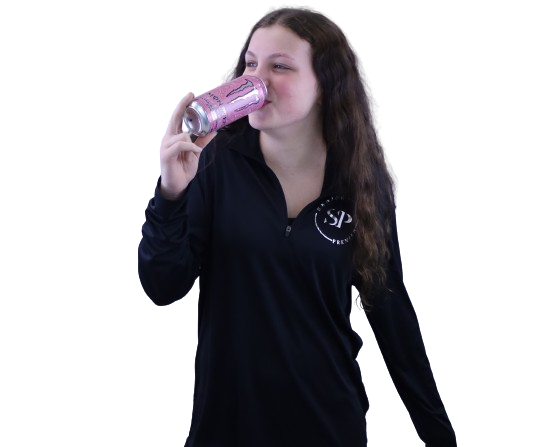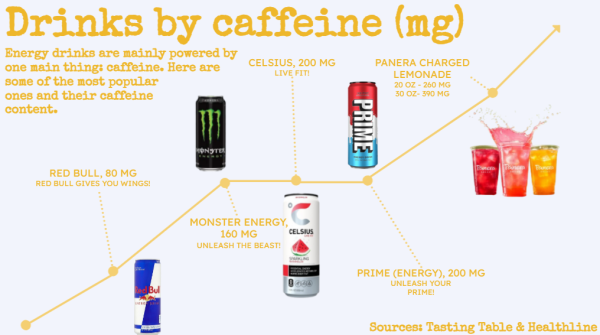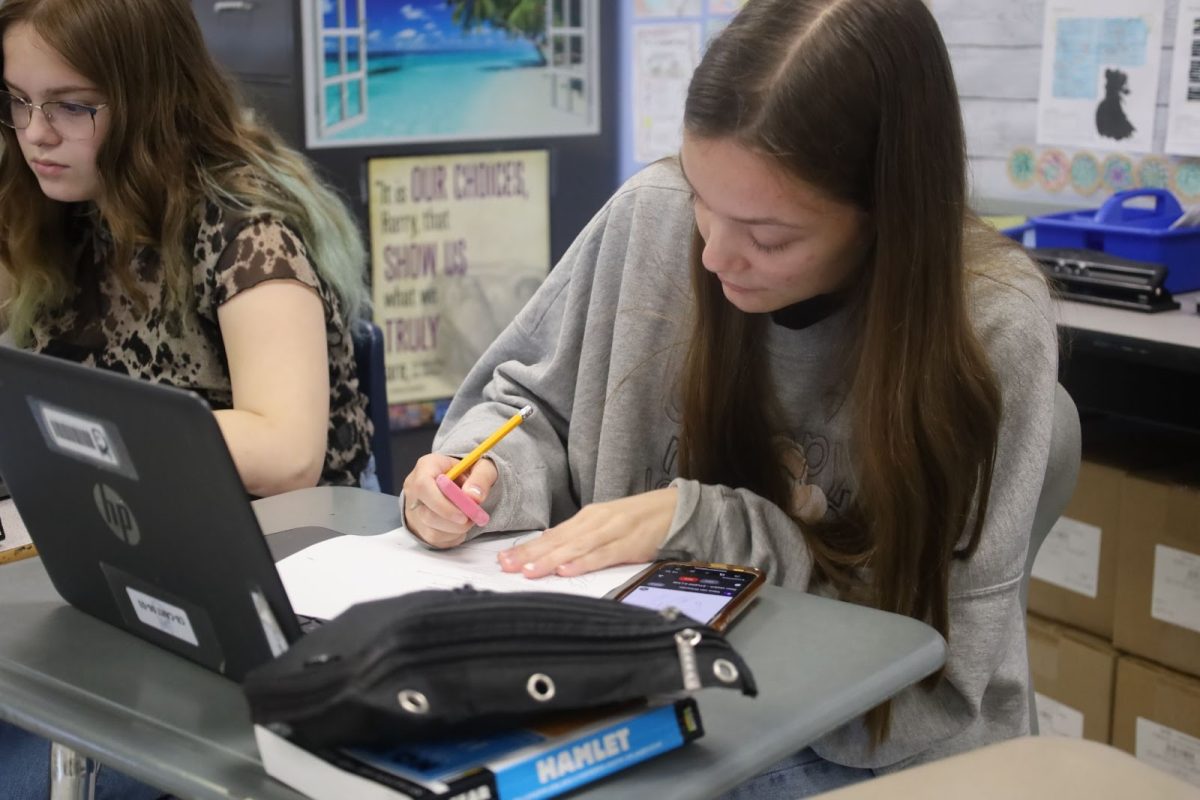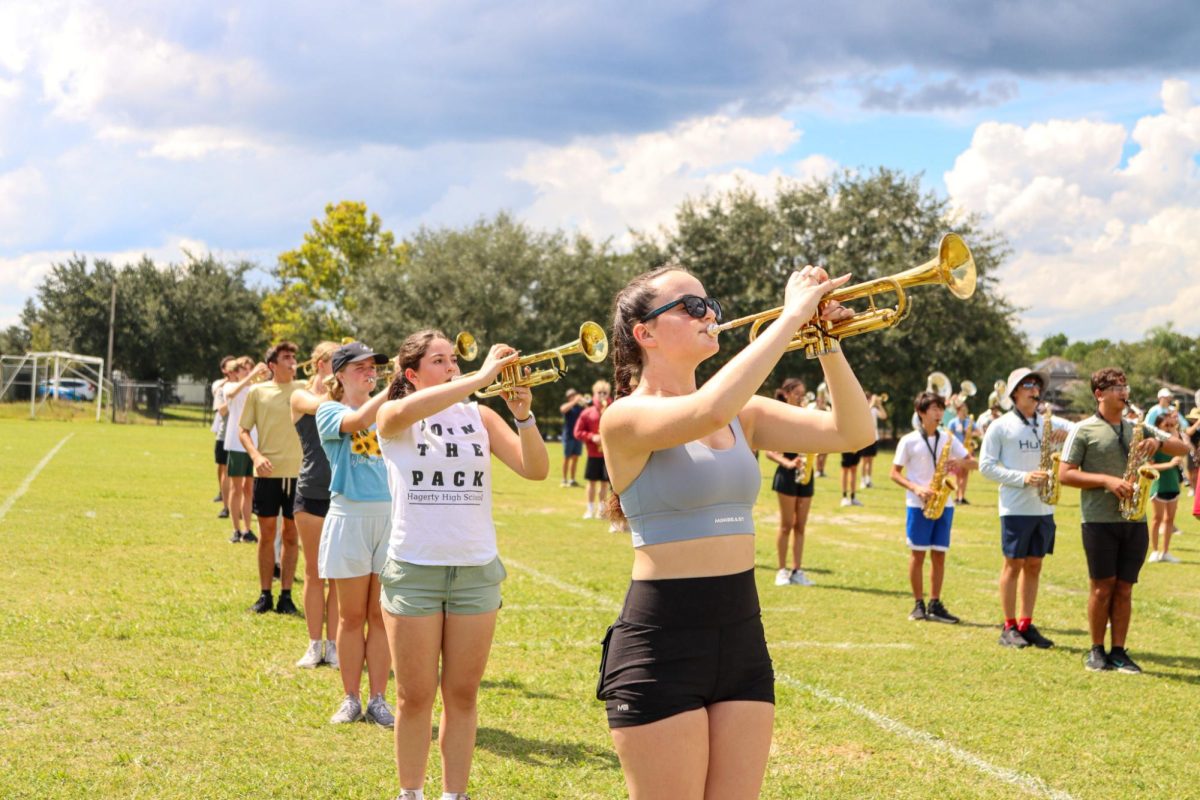Charged Up

Caffeine is a drug that stimulates your brain and nervous system. It is typically consumed in drink format as a way to provide energy to the consumer. It also increases the circulation of chemicals such as cortisol and adrenaline in the body. The effects of caffeine can be felt anywhere from five to 30 minutes from consumption. Naturally, caffeine is found in coffee beans, tea leaves and guarana, popular plants that make popular drinks.
With the science lesson out of the way, let’s see how these popular drinks affects the lives of students here at Hagerty.
A study from the Mayo Clinic shows that 83 percent of teenagers (13-18 years old) say they consume caffeine on a regular basis, and 96 percent of teenagers state they consume caffeine occasionally. This shows that caffeine intake is prevalent among the adolescent population, raising concerns about the potential impact on their overall health and well-being.
For senior Cailin Kilkenny, who works 35 hours a week as a manager at Oviedo Panera Bread, having the energy to get through the day is key.
“I usually drink two [to] three energy drinks a day,” Kilkenny said, “energy drinks help me get through a long day of school, work and online work.”
According to a poll taken surveying Hagerty Students, 51% of them consume caffeine on a regular basis.
Additionally, according to the American Academy of Pediatrics, minors ages 12 to 18 should cap daily caffeine intake at 100 milligrams (mg). However, popular energy drinks among teens, like Monster, Celsius and Prime, exceed the recommended cap, with Monster having 160 mg per can and Celsius and Prime having 200 mg.
Senior Riley Von consumes a similar amount, also drinking two energy drinks a day, although the reason differs, as her volleyball practices, dual enrollment classes, and working as a grocery clerk at Publix only allow for four hours of sleep.
“I have [long] practices and work late, so I usually end up with minimal sleep, Von said. “I use [caffeine] to boost alertness and academic and athletic performance.”
Drinking caffeine excessively is reported to have damaging side effects, including digestive issues, insomnia and high blood pressure. And according to Science Based Medicine, 50% of caffeine drinkers will experience such effects. However, according to junior Amberly Napierata, who works long hours at Chick-Fil-A, it’s hard to break those habits when you need to stay alert in school.
“When I don’t have caffeine in the morning I have a headache all day and I [feel] like I’m falling asleep in class,” Napierata said. “I feel so tired without it.”
Napierata describes caffeine withdrawal, the process of drinking a high intake of caffeine daily, followed by an abrupt withdrawal. This process is reported to cause more harm than good, including headaches, anxiety and fatigue, the latter of which is something Kilkenny has experienced in the past. She highlighted a reliance on the Charged Lemonade from Panera Bread, and with its 390 milligrams of caffeine in a large portion, it has come under major fire for not being a safe energy drink option.
“As soon as I stopped drinking them as regularly, I felt a huge drop in my day to day energy and felt dizzy,” Kilkenny said.
Transitioning from middle school (which starts at 9:30 a.m. in Seminole County) to high school (which starts at 7:20 a.m.) is a huge adjustment for students, and it often requires them to make different choices when it comes to sleeping and energy habits. Senior Emily McCluskey turned to caffeine to help make the change more manageable.
“I’ve been drinking caffeine regularly since [my] freshman year,” McCluskey said. “My freshman and sophomore years I’d wake up and [drink] a [cup of] coffee, but [my] junior and senior year I switched to Monsters.”
Sophomore Emma Smith describes a similar need, as being on the junior varsity softball team and her automotive classes require constant energy.
“I started consuming them on a daily basis when I entered high school,” Smith said.
With all previous matters addressed, a singular question remains.
In exploring the caffeine habits of high school students, it’s clear that many rely on caffeinated beverages to navigate early morning classes and busy schedules. However, it’s important to understand one’s limits when it comes to one’s body, like sophomore Sarah McQuillin.
“On a given day, I’ll drink one Monster Energy,” McQuillin said. “Any more than that can be dangerous for my health.”
At 7 a.m., students may vary in energy levels, and for those seeking an energy source, caffeine remains a popular choice. And for the foreseeable future, it’s here to stay.
Your donation will support the student journalists of Hagerty High School. We are an ad-free publication, and your contribution helps us publish six issues of the BluePrint and cover our annual website hosting costs. Thank you so much!










